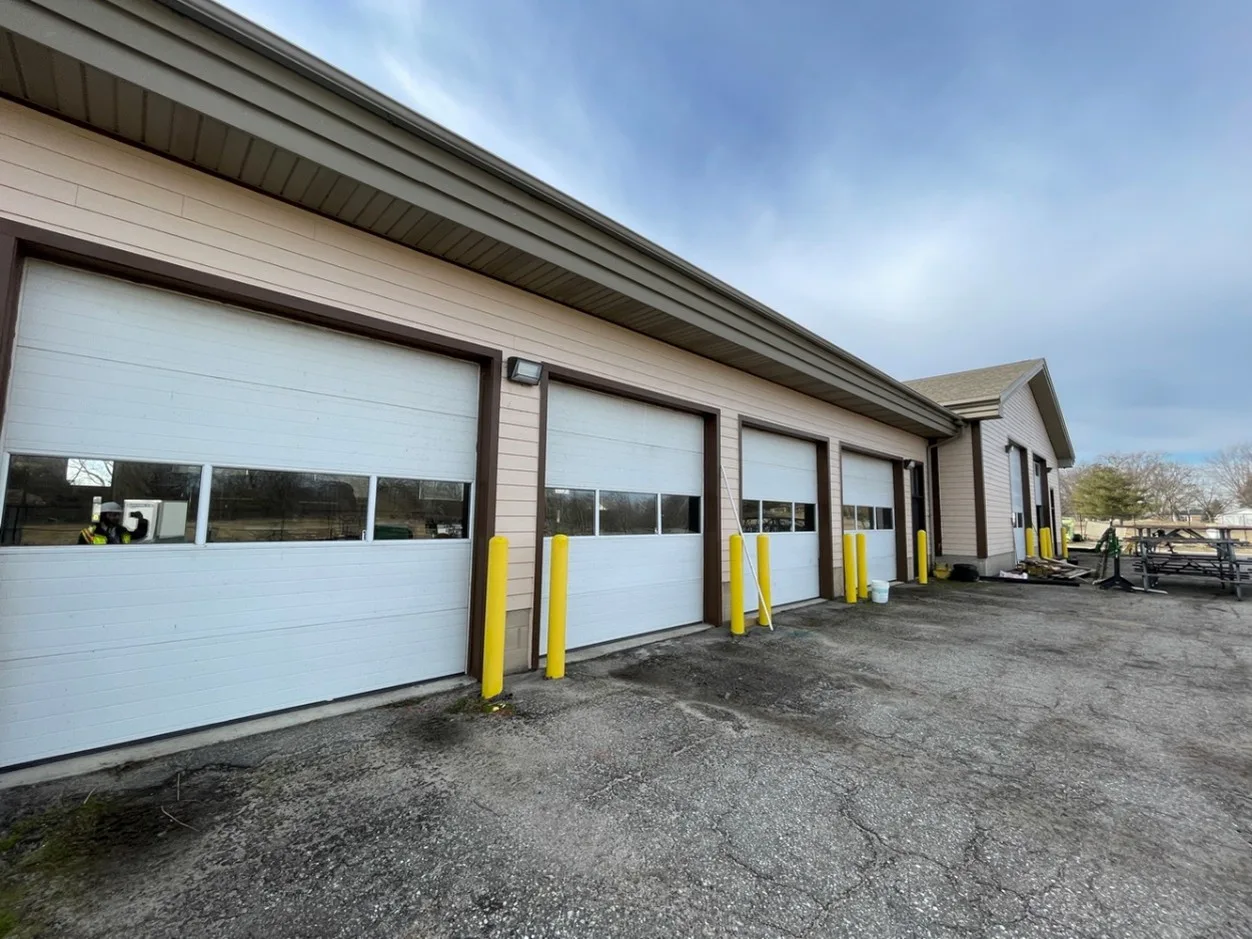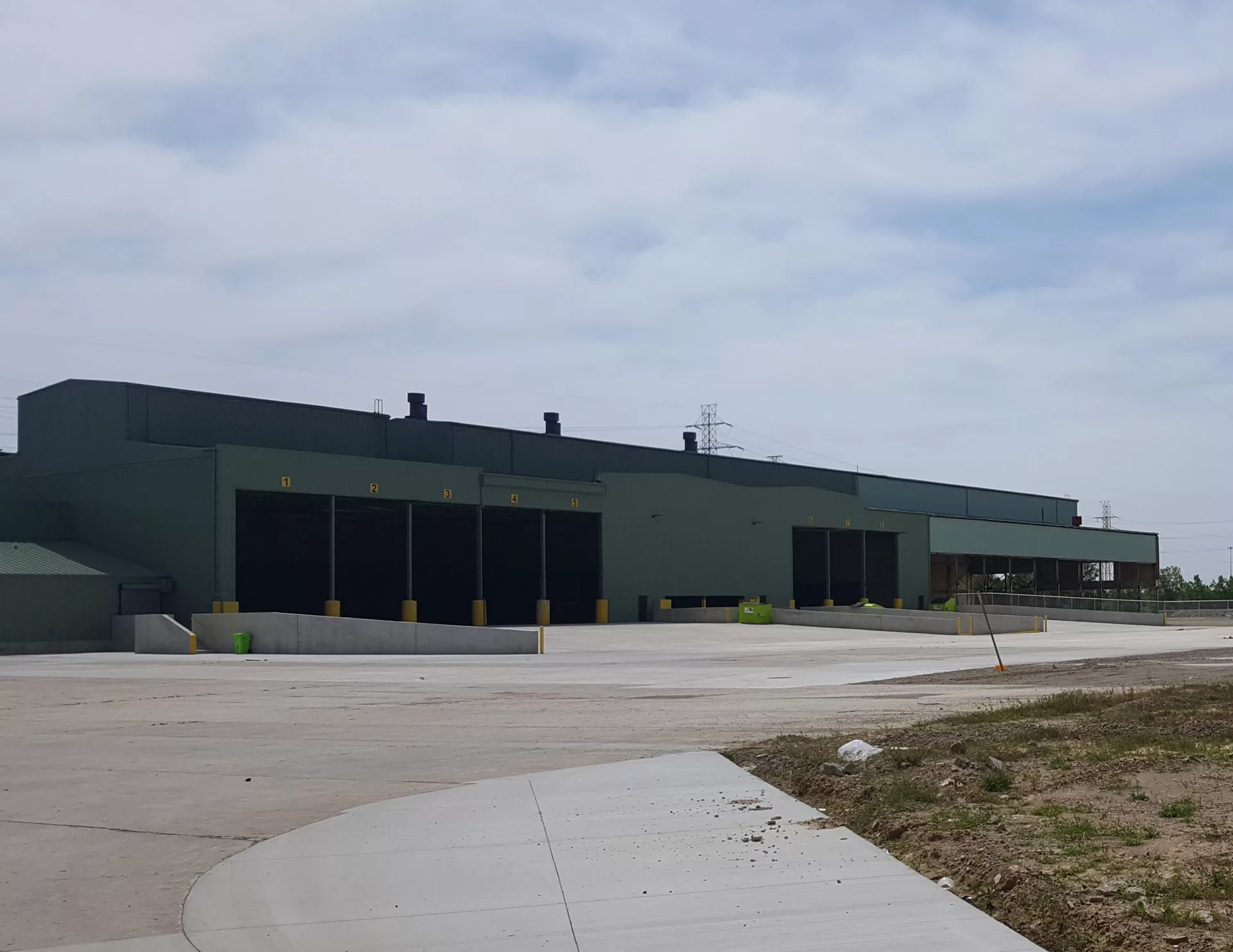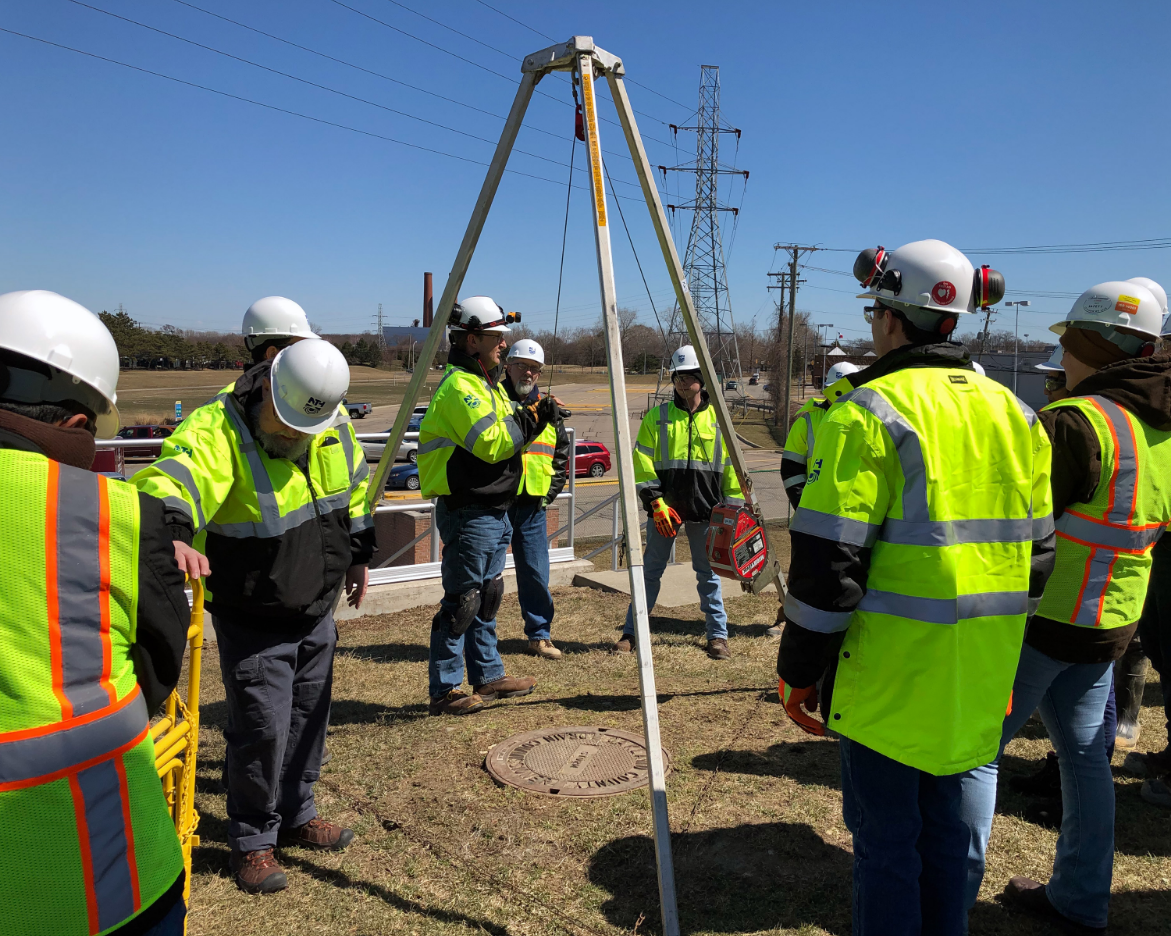Project Overview
The Jackson County Landfill (JCLF) is a closed “Act 87” facility used for municipal solid waste (MSW) disposal that operated between the 1930s and 1970s. Because it predates Michigan’s Solid Waste Management Act (Part 115 of PA 451 1994, as amended), the older part of facility is unlined and did not include a graded floor or an overlying leachate collection system as part of its original design. A perimeter French drain style system collects leachate and drains to a series of underground holding tanks. Leachate is currently managed by periodically removing the leachate using tanker trucks for off-site treatment and disposal.
Jackson County wanted to evaluate options to replace the current truck-and-haul leachate management method and address new discharge regulatory requirements for per- and polyfluoroalkyl substances (PFAS) and opted for construction of an on-site reverse osmosis (RO) treatment plant. The proposed system would discharge the treated permeate to a nearby surface water body while the concentrated RO reject would continue to be hauled for off-site disposal.
Project Scope
Even though permeate from an RO system is typically essentially clean water, Michigan environmental regulations consider the material as industrial waste, and it must be handled as such. NTH evaluated a number of options for disposing of clean permeate, including spray irrigation onto the surface of the landscaped landfill cover with overwinter lagoon storage, discharge to a nearby county drain, discharge to a distant sanitary sewer and discharge to an
on-site surface water pond. Based on our evaluation, the owner selected discharge to the on-site surface water pond as the method of disposing of the clean RO permeate.
NTH led the engineering design for conveying leachate from the existing underground storage tanks to the new treatment building, including pipe routing to avoid existing waste, conveyance pipe design, outfall pipe routing and structure design, and civil engineering. Working closely with our subcontractors, the client and the treatment system vendor, we developed specifications for the location and layout of the treatment building, evaluated the need for secondary containment for process chemicals and leachate, determined the need for safety equipment, and prepared construction drawings and specification drawings including civil, electrical and mechanical components. As part of the project, we completed an NPDES permit application for the treatment system discharge to the nearby pond, including an antidegradation review. We are in the process of negotiating the monitoring parameters and frequency in the draft NPDES permit issued by EGLE.
Project Challenge:
The owner needed a cost effective solution to dispose of clean RO permeate from the proposed treatment plant to be located at the remote site.
NTH Solutions:
NTH assembled a team of in-house experts and subconsultants to evaluate a number of different permeate disposal options, prepare construction drawings and specification documents, and work with EGLE to obtain an NPDES permit.
Client Benefit:
Discharging directly to a nearby pond instead of haul-and-truck, will allow Jackson County realize significant cost savings.



